Is Edge’s auto translator not working on your PC? If so, this post will interest you. For users, Edge does not automatically translate a web page to their language or prompt them to translate a page that is in a foreign language. This issue might be caused if you have configured your language settings wrongly.
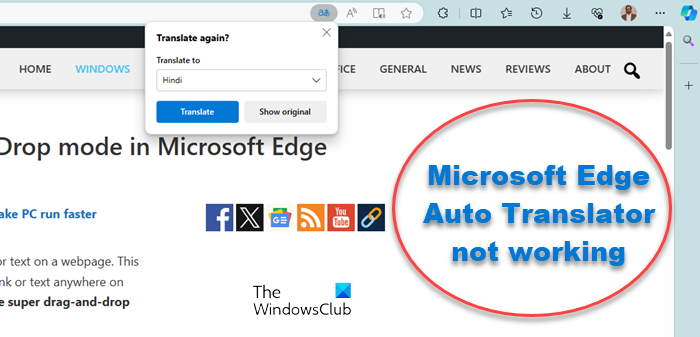
How do I use Microsoft Translator in Edge?
Microsoft Edge offers to translate a web page whenever you visit a page that is not in your preferred language. It also provides a Translate button which is present in the address bar of the browser. You can click the button and then choose the language you want to read a web page.
Fix Microsoft Edge Auto Translator not working
If the auto language translator is not working in Microsoft Edge on your Windows PC, you can use the below fixes:
- Wait for some time and relaunch Edge.
- Review your language settings in Edge.
- Keep Edge up-to-date.
- Reset Microsoft Edge.
- Translate a web page using the right-click context menu.
Before you attempt the above troubleshooting methods, make sure your internet is not working fine and try clearing your browser cache to check if it helps.
1] Wait for some time and relaunch Edge
It could be a temporary issue, so Edge is not auto-translating a webpage to your language. So, wait a while and reopen Edge to check if the translator is working fine.
2] Review your language settings in Edge
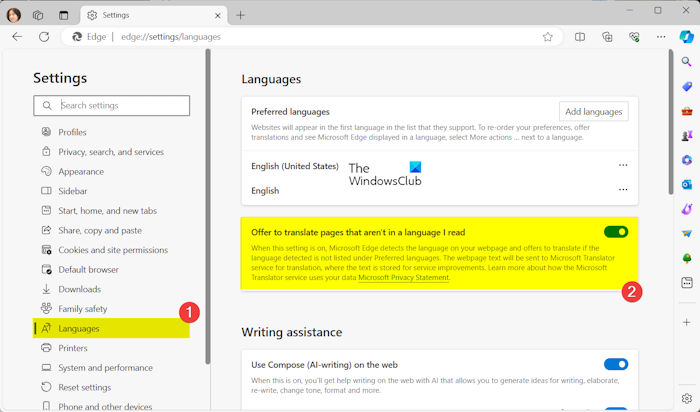
Your Edge’s language settings might be incorrectly configured which is causing this issue. Hence, if the scenario is applicable, check your language settings and set up them correctly. You can follow the below steps to do that:
- First, click on the Settings and more (three-dot menu) button in Edge.
- Now, choose the Settings option.
- After that, move to the Languages tab from the left-side pane.
- Next, make sure the Offer to translate pages that aren’t in a language I read toggle is switched On.
- Additionally, make sure you have added the preferred languages to which you wish to translate a page to the list. Click on the Add languages button, tick your languages, and press the OK button.
Once you have configured the above options, relaunch Edge and check if the issue is resolved.
Read: How to translate text into a different language in Office?
3] Keep Edge up-to-date
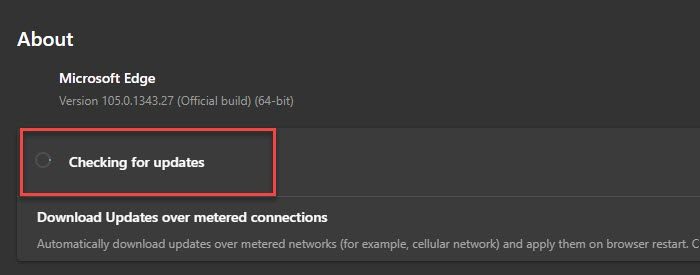
Such performance issues occur when your browser is outdated. So, ensure that you are using the latest version of Edge. To check for pending updates, click on the Settings and more > Help & feedback > About Microsoft Edge option.
Fix: Google Translate not working in Chrome browser.
4] Reset Microsoft Edge
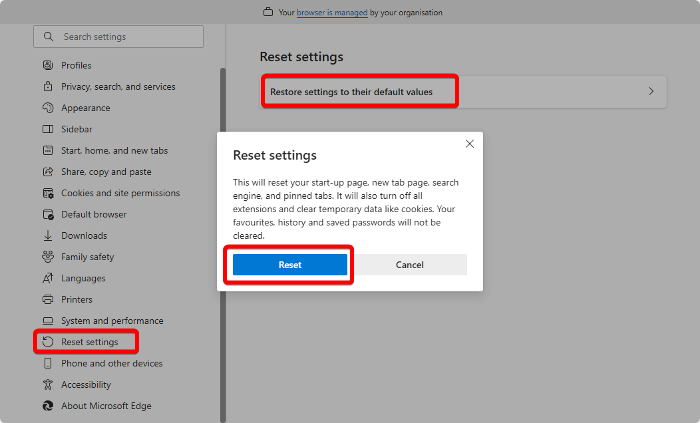
Some affected users have reported that resetting Edge to its default settings helped them fix the translator issues. You can also do the same and check if it works.
To reset Edge, enter edge://settings/reset in the address bar. After that, press the Restore settings to their default values option. Check if Edge’s translator feature is working correctly or not.
5] Translate a web page using the right-click context menu
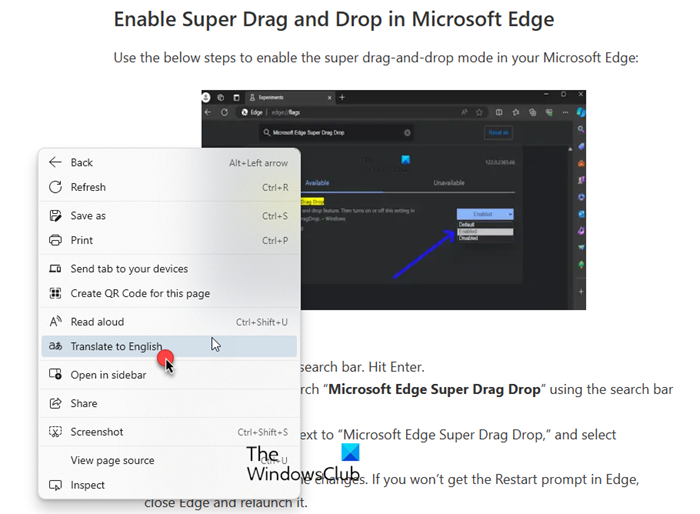
If Edge is not prompting a web page to translate to your preferred language or you can’t see a Translate button in the address bar, you can force translate a web page. Right-click on a web page and choose the Translate to English option from the context menu. A Translated page prompt will appear beside the address bar. You can now choose the desired output language. Check if the page is translated or not.
If the problem remains the same, you can try disabling third-party add-ons in Edge or switch to an alternative web browser.
Read: Best free Translator apps for Windows PC.
Why does Microsoft Translator not work?
If Bing Translator is not working in your web browser, it could be due to a third-party extension or corrupted browser cache and cookies. Besides that, if you are running an older version fo your browser, this problem might occur. VPN or proxy software can also interfere with Bing Translator. To fix this issue, disable extensions, update the browser, and clear the browser cache and cookies.
Leave a Reply